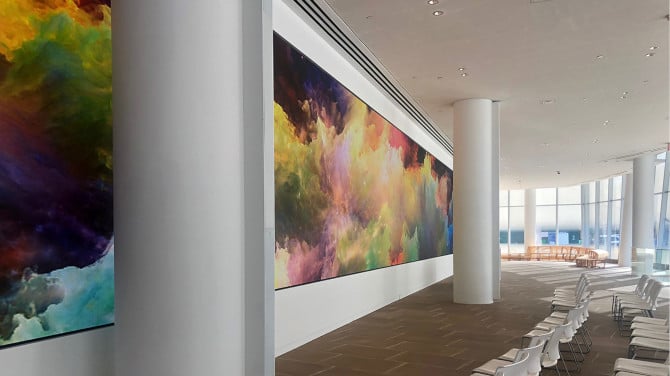Light Emitting Diode wall panels have gained popularity for their ability to deliver crisp imagery in various settings, from corporate environments to event venues. One of the primary aspects of these systems is their connectivity options, which allow users to connect them to different devices and systems. Understanding the diverse input options supported for Light Emitting Diode wall panels is essential for maximizing their use and effectiveness. This article details these features, highlighting how they can cater to specific needs and preferences.

One frequent connection approach for LED wall panels is High-Definition Multimedia Interface. HDMI is widely known for transmitting crisp video and audio streams between devices. This interface type is especially beneficial in commercial settings, such as meeting spaces or training rooms, where presentations or video content are often shared. By using digital connectors, users can easily connect laptops, projectors, and streaming devices to Light Emitting Diode wall panels, ensuring a clear and dynamic presentation of information.
Another commonly used connectivity option is DisplayPort, which is comparable to HDMI but offers additional benefits. Display Port can support elevated refresh rates and resolutions, making it an excellent choice for interactive media or design-heavy applications. For those using Light Emitting Diode wall panels in environments where output quality is essential, such as esports arenas or design studios, Display Port can provide the required visual clarity. Additionally, many modern computers and graphics cards feature Display Port web connections, making it a convenient solution for technology-oriented users.
In addition to High-Definition Multimedia Interface and Display Port, cordless connectivity options are becoming increasingly common in LED wall panel solutions. Wireless interfaces allow operators to share content without the need for physical cables, promoting a cleaner and more adaptable configuration. Platforms such as Wi-Fi and Bluetooth enable users to connect smartphones, tablets, and laptops seamlessly to Luminescent Diode wall panels without tangled wires. This convenience is especially beneficial in dynamic settings like exhibitions or live functions, where quick changes to displays are often required.
For extensive installations or more intricate configurations, LAN integration through wired networking is another reliable solution. Wired connections provide a stable and reliable led wall panel design way to connect multiple Light Emitting Diode wall panels within a system. This approach is suitable for electronic display applications found in shopping malls or airports, where multiple panels may need to present coordinated content across a broad area. By using Ethernet cables and network switches, users can ensure that all connected panels receive uniform data and information seamlessly.
Finally, it's crucial to evaluate the evolution of interface technology with technologies such as USB-C and Thunderbolt 3. These newer connection types offer increased data transfer speeds and versatility by allowing one connector to handle both energy transfer and data exchange. As more systems incorporate these standards, Light Emitting Diode wall panels equipped with USB-C ports will likely become more common. This evolution in connectivity not only improves the capabilities of LED wall panels but also aligns with the growing trend of minimalism in technology setups by reducing the number of cables needed.
In summary, examining the broad interface options accessible for LED wall panels reveals many possibilities for users across various fields. From traditional methods like HDMI and Display Port to contemporary wireless solutions and network connections, each option serves unique purposes suited to distinct needs. Furthermore, next-gen technologies like Universal Serial Bus-C promise further advancements in how users interact with LED wall panels. By understanding these connectivity choices, individuals can make informed decisions that optimize their overall engagement with these versatile display tools.